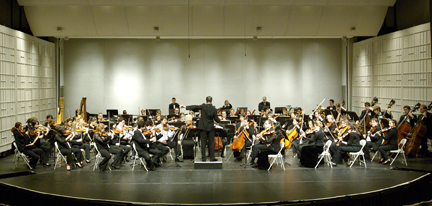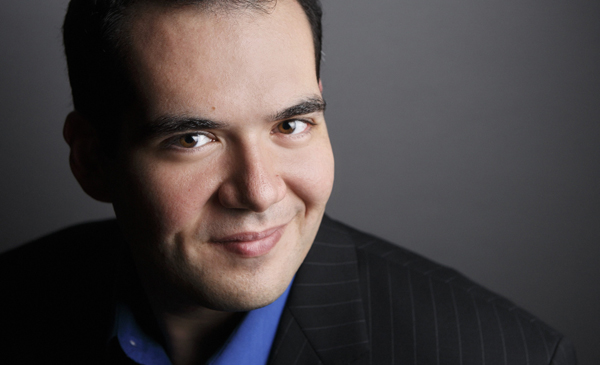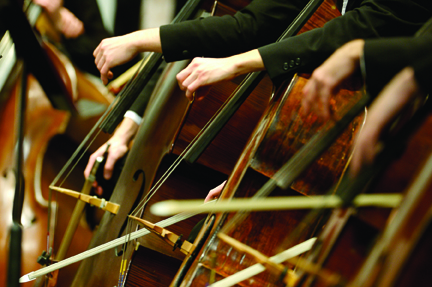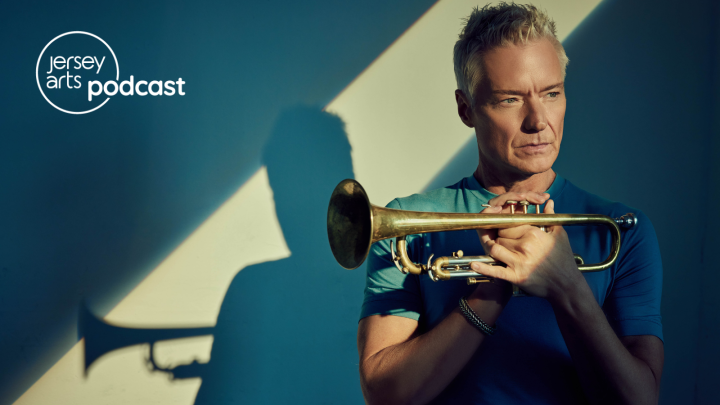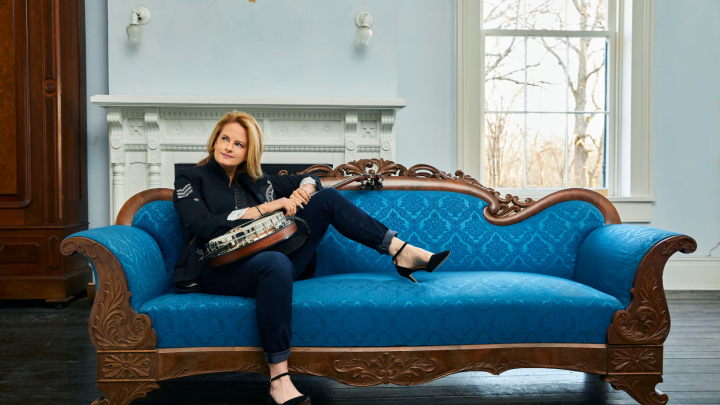A “Great” Evening with Symphony in C
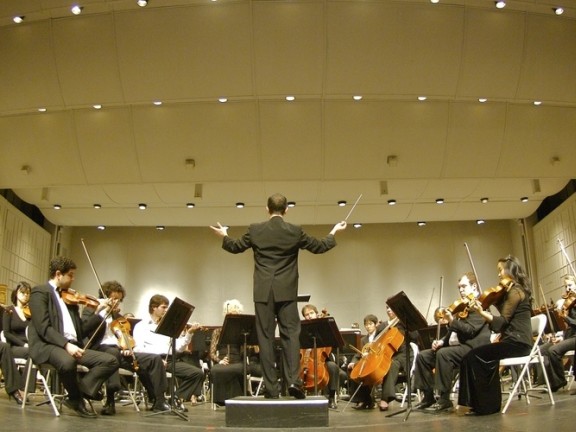
On Saturday, January 18 at 8:00 p.m. at the Rutgers-Camden Center for the Arts, Symphony in C presents a concert featuring three works: Ravel’s “Pavane for a Dead Princess;” Britten’s “Serenade for Tenor, Horn and Strings” and Schubert’s Symphony No. 9 (nicknamed “The Great”). Not only does this concert take you on a tour of 120 years of music history, you’ll also experience works strongly evoking Spain, Britain and Austria. Got your passport (and time machine) handy? Great, let’s be off. Ravel’s “Pavane for a Dead Princess” is well-known (trust me, if you ever took music appreciation in school, you’ve definitely heard this one) and for good reason. This hauntingly beautiful work was originally composed for solo piano in 1899, but Ravel (yes, composer of the even more famous Boléro) orchestrated the work in 1910. Being an orchestra, Symphony in C will perform this version in the January 18 concert.
A pavane (pah-VAHN) is traditionally a slow, stately court dance common in Europe in the later Renaissance, especially in Spain and Italy in the 16th and 17th centuries. Before you get too depressed about a poor dead princess, note that Ravel has said that, despite the title, the piece was not a funeral lament for a dead child but “rather an evocation of the pavane that might have been danced by such a little princess as painted by Velázquez.” And here’s a fact sure to make you a winner during cocktail party trivia: Ravel dedicated this work to his patron, Princesse Edmond de Polignac, whose father was Isaac Singer, the famous sewing machine manufacturer.
Not only should you listen for the beautiful melodies and rich harmonies of “Pavane,” but listen for Ravel’s skill in orchestrating this 1910 version. The balance between the strings, woodwinds and horn is particularly remarkable.
The second work on the program is Benjamin Britten’s “Serenade for Tenor, Horn and Strings, Op. 31,” written in 1943 at the request of horn player Dennis Brain. Here, the song cycle features guest artist, tenor Dominic Armstrong. “Serenade” sets a selection of six poems by British poets on the subject of night, including both its calm and sinister aspects. The movements of this work are:
Prologue (solo horn)
Pastoral (text by Charles Cotton, 1630-1687)
Nocturne (text by Alfred, Lord Tennyson, 1809–1892)
Elegy (text by William Blake, 1757–1827)
Dirge (anonymous text, 15th century)
Hymn (text by Ben Jonson, 1572–1637)
Sonnet (text by John Keats, 1795–1821)
Epilogue (solo horn – offstage)
A versatile and major composer of the mid-20th century, Britten tended to create accessible, tonal works evoking the history, language, music and imagery of old England. (Again, you alums of music appreciation class are sure to remember his Children’s Guide to the Orchestra.)
“Serenade” is a central work in both tenor and horn repertoires and in the work’s premiere, Britten’s lifelong companion, Peter Pears, sang the tenor role.
I recently sat down with tenor Dominic Armstrong at the National Opera Center to chat about this piece and Armstrong’s career. He has a number of Britten’s works (both songs and operas) in his repertoire, which begs a kind of nature-versus-nurture question: do you sing these works well because you like Britten? Or do you like Britten because his style matches your voice so well?
Armstrong’s answer is both. “Britten is very comfortable for me; it suits my voice and my temperament,” he said. With a mom who teaches literature – Shakespeare, to be precise – tends to give a singer an affinity for English composers who often use British playwrights and poets as his librettists, such as Britten and Vaughn Williams.
Since a typical performance for Armstrong involves an entire opera, with a character to play, I asked him if he approached a song cycle differently in his preparation or on stage. He said it isn’t all that different for him, actually, though you are usually up there alone in a song cycle, as opposed to an opera. “You have to bring more personal feeling to it,” Armstrong said. “The way I see it, you’re still playing a role, as you do in an opera. But you have to look at the words and make people understand the communication that you are putting into it.”
So I asked for the inside scoop: what should we really listen for in "Serenade?" Armstrong really wants us to keep our ears open for the dirge movement, which is his favorite (and no, Armstrong definitely didn’t strike me as the melancholy type). “Underneath the singing, the orchestra repeats its part over and over while I keep coming back to the same line: ‘And Christe receive thy saule.’” While to some this constant repetition may sound a little dull, Armstrong relishes the opportunity to color the notes and the text in a different way each time, setting them apart, giving him a chance to really bring out Britten’s musical dark side. “And the constant pulsing of the orchestra really drives the work,” he continued.
And in response to one of my favorite opera interview questions – what’s your dream role to sing? – Armstrong replied instantly, with no hesitation whatsoever. “Peter Grimes,” he tells me. Yup, fellow opera snobs, Armstrong’s dream role is by Britten.
“I have some good ideas about the character and role and I want to get a chance to see if they work.” Given his literature background and obvious connection to the work of Britten, I’d say the bet is good that they will.
The final work on the January 18 concert is Schubert’s majestic Ninth Symphony, called “The Great.” Did you know that Schubert died just before his 32nd birthday? And that by that point, he had written more than 600 songs, six masses, 15 string quartets and seven complete symphonies? It’s enough to make this gal feel a teeny bit under accomplished, but grateful for Schubert’s tremendous output. Even more amazingly, his symphonies weren’t published during his lifetime and it’s possible that he never heard them performed. (Though this may beg the question: if a symphony is written, but not played, does it make a sound? Beethoven, especially, who became deaf later in life and could only hear his work in his head, would emphatically say “yes!”)
Schubert was born in Vienna and as a teenager studied the Classical (yes, with a capital C) symphonic models of Mozart and Hayden. And it was these composers who had the most influence on him as he wrote his first six symphonies – by the time he was 21. His next few symphonic works stayed in various states of completion, until he began this symphony No. 9 in C in 1825 at age 28. Unlike most major compositions of this era, Schubert composed this symphony without a commission. It was pretty unusual at this time to write such a major composition without first being paid for it by a patron or without any promise of performance when you were done. But this was an unusually happy and stable time in Schubert’s life, which is reflected in various musical moments.
So if it wasn’t commissioned and wasn’t performed in Schubert’s lifetime, how come we know about it today? Thanks to Schubert’s friends (and important composers in their own right): Robert Schumann and Felix Mendelsohn (I know, we should all have such wonderful and important friends!).
Schumann went to see Schubert’s brother after Schubert’s death and was permitted to look through his scores. Schumann plucked this work out of the pile and recognized its importance. Schumann sent the score over to his friend, Felix Mendelssohn, who conducted the premiere performance in 1839.
To think, that if Schubert didn’t have such musical friends, we might never know about this work. That’s the kind of thought, I’m sure, that drives most musicology Ph.D. students, determined to discover the next unknown symphony by a major composer, buried in an archive somewhere.
But lucky for you, you don’t need to bury yourself in a dusty old archive to hear these great works – just head down to Camden on January 18.
* * *
Symphony in C’s “Schubert Great Symphony” concert takes place on Saturday, January 18 at 8:00 p.m. at the Rutgers-Camden Center for the Arts, located at North 3rd Street in Camden. Tickets ($24-$51; students $10) may be purchased online at www.SymphonyInC.org or by phone at 856-240-1503.
If you’re a Jersey Arts Member (and really, why wouldn’t you be?), you can buy one ticket, get one free. Call the box office at 856-963-6683 and mention "Jersey Arts Member" to claim this discount.
For more information about Symphony in C, visit their website at www.SymphonyInC.org, or find them on Facebook and Twitter.

